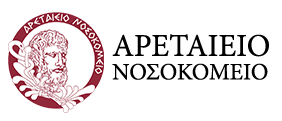Treatments – General surgery
Pilonidal sinus disease surgery
All types of surgery for this condition are usually done under general anaesthetic.
Emergency
In patients presenting with an abscess the main treatment is laying open (incision and drainage), draining and cleaning of the cavity. The cavity will then be packed with an absorbent dressing that will need regular changes, initially on a daily basis and as the wound heals less frequently. This type of wound may take a few weeks to heal completely and almost two thirds (60%) of patients will be cured from the disease and not need any further surgery. The remaining will form a sinus tract and have recurrent symptoms that will need scheduled surgery.
Elective (non-emergency)
The main problem with all types of surgical treatment for pilonidal sinus disease is the risk of disease coming back. All types of procedure have a risk of recurrence. Surgical research currently suggests that:
- there is a very small difference in recurrence between leaving the wound open to heal from inside out compared to closing the wound off the midline
- closing the wound allows for faster healing
- off the midline closure of the wound has a reduced risk of infection and recurrence compared to closing the wound in the midline
The preferred approach for this type of surgery is therefore an off the midline closure technique called “Cleft closure” with approximately a 4% recurrence rate. On occasions though due to the presence of significant infection the wound may be left open to heal from inside out and this takes longer to heal. Techniques such as the insertion of surgical glue or the use of laser are currently being investigated and not established in the surgical field. The most appropriate treatment option for your individual case will be discussed with you at the clinic.
Cleft closure
This procedure is usually performed as a day case with some patients required to spend a night in hospital. The procedure itself involves the removal of the diseased skin and closing the different skin layers with stitches under a general anaesthetic. A small surgical drain is normally left in place for 2-3 days to help drain any residual fluid that the body produces following the operation. The resultant scar lies to one side of the midline, is reasonably long and closed with non-dissolvable sutures. Patients normally go home with their drain and return back on day two or three for a review in order for this to be removed. The wound is reviewed again a few days later in order to have the remaining sutures out.
Recovery
After the procedure, you will be able to eat and drink normally and go to the toilet in the normal fashion. Slight care should be taken when wiping your self. You may find it somewhat sore afterwards; you will be given painkillers to go home with. Normally, sitting is the most painful position, as this not only stretches the wound from top to toe, but also from side to side. Standing and reclining/lying are often more comfortable in the immediate aftermath of surgery. This will gradually improve over a couple of weeks.
Limberg (rhomboid) flap
This procedure is reserved for patients with pilonidal sinus disease affecting both buttocks and more extensive disease difficult to treat which requires the excision of a considerable size of diseased skin. A plastic type of procedure is therefore employed which uses part of the healthy skin from one buttock to cover the wound area where the diseased skin has been removed. The shape of the skin moved on its base is in the shape of a diamond and is sutured in place with a number of stitches. This is a much more extensive and invasive procedure but has the lowest risk of recurrence (2%).
Recovery
Patients spent 1-2 days in hospital and 1 or 2 drains are left in place for up to 5 days to prevent the build up of fluid in the larger wound. The scar is also bigger and may resemble a question mark. Further details regarding the procedure will be discussed by your doctor. Because of its nature this operation has a longer recovery period.
Risks of the operations
Any surgical procedure comes with a risk of bleeding/bruising which is minimised by the use of electrocautery to seal any vessels. There is also an infection risk reduced by the use of antibiotics around surgery. The risk of recurrence depends on the type of procedure performed as mentioned before and after both procedures it will be sore especially after sitting. Because of their size the wounds will heal leaving behind scars which can be large after these procedures. You would expect to be off work for up to 4 weeks following the “Cleft closure” procedure and even longer following a Limberg flap.
Need to contact us or book an appointment?
Disclaimer
The information relating to general and colorectal disorders and their treatments given on this website is not complete and is not intended as a substitute for a consultation with your doctor. Always seek medical advice from your doctor before making a decision about any of the conditions and/or treatments mentioned on this website.
© Dr Georgios Markides
Contact Information
You can always contact our Clinic for booking appointments and other useful information:
Dr. Georgios Markides,
Consultant General & Colorectal Surgeon
Aretaeio Hospital, 55-57 Andreas Avraamides Str., 2024 Strovolos, Nicosia, Cyprus
+357-22-020728
Hospital: +357-22-200300
Fax: +357-22-512372
How to find us

